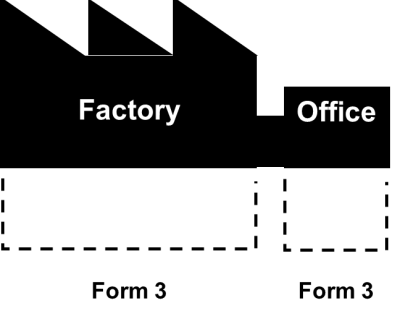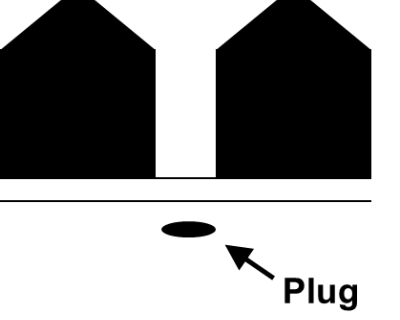-
Home
-
Development
-
Building in Playford
- Essential Safety Provisions – Frequently Asked Questions
Essential Safety Provisions – Frequently Asked Questions
You’ll find on this page:
What are Essential Safety Provisions (ESPs)?
Fire safety items which help to protect occupants and property in the event of an emergency such as a fire and include provisions such as fire extinguishers, non-flammable linings, exit doors and emergency lighting. ESPs as they are managed today were introduced in 1994 – prior to this buildings operated on a Logbook system.
Where do ESPs come from?
When assessing a Development Application, the relevant authority (Council or a private certifier) determines based on the National Construction Code the fire safety equipment required to be installed on the property to ensure an adequate level of protection. The required ESPs are listed on a Schedule which forms part of the Development Approval.
How can I find out what ESPs apply to my building?
Refer to previous Development Approval documents if you have them, or you may ask Council if they have records. You may be required to engage a suitably qualified fire contractor or Building Certifier to determine what equipment is required for your building in certain circumstances.
Whose responsibility is it to maintain ESPs?
Under the Planning, Development and Infrastructure (General) Regulations 2017, the responsibility and liability of building fire safety ultimately falls on the property owner. Whilst owners and tenants might have lease agreements in place about who is responsible for undertaking the maintenance of the fire safety equipment on the property, the owner will always be held legally responsible.
What is a Form 3 (Certificate of Compliance with Maintenance Procedures) and why do I need to submit one to Council?
A Form 3 is a document required to be returned to Council at the start of each year certifying that all required ESPs have been tested and maintained for the year prior. The Form 3 lists all applicable ESPs and their relevant maintenance standards. Form 3s are only required for high-risk buildings, such as:
- All Class 2 buildings; or
- Class 3, 4, 5, 6, 7, 8, or 9b buildings which exceed three storeys or 500m2; or
- Class 9a or 9c buildings of any size; or
- The relevant authority has requested a Form 3 due to there being a performance solution; or
- The building has been subject to a fire safety defect notice.
A Form 3 is attached to a building forever (vacant or otherwise) until it’s either demolished or the Form 3 is replaced by a new one. If you are unsure what classification your building is or whether it requires a Form 3, don’t worry, Council will contact you to confirm that a Form 3 is due.
Owners of buildings that are not required to provide a Form 3 to Council annually must still maintain all required ESPs.
Why has Council written to me requesting a Form 3?
If you have been requested by Council to provide a Form 3 for your building, this means that Council has determined that a building owned by you meets the above criteria and requires an annual Form 3 maintenance certificate to be provided. If this is the first time you’ve been asked to provide a Form 3 to Council, it may be that your property was audited, and we discovered that a Form 3 has not been provided for some time (or maybe even never). It is the responsibility of the property owner to remember to return their Form 3 to Council annually.
How do I complete my Form 3?
Ensure that you have tested and maintained all items listed on the Form 3 for the year prior, then sign and send the Form 3 to Council at either build@playford.sa.gov.au or 12 Bishopstone Road, Davoren Park SA 5113.
Tip: Ask Council for a PDF version of the Form 3 for your building (if available), then save a copy along with a reminder for the start of each year to make future returns easier.
There is an item on my Form 3 which I do not have on the property.
Put simply, all ESPs which are specified on a Schedule of ESPs issued for a property must be installed as per the approved plans and conditions of approval. The ESPs required for a property have been determined by a qualified person who has assessed the development against the National Construction Code. Council cannot accept a Form 3 which is incomplete, missing items, or has had items crossed out.
If you identify some ESPs which are not present on your property but have been issued with a Development Approval, your best course of action is to install them in accordance with the approved plans without delay. Alternatively, you may engage a person qualified in fire engineering or building certification to assist you in determining whether an ESP can be removed from the Schedule. Council can help you locate plans if required.
Why does my property have multiple Form 3s?
It is common to have multiple Form 3s for one property and practically it makes little difference when it comes to undertaking maintenance of ESPs. Form 3s relate to Development Approvals rather than buildings specifically, therefore if your building was built in multiple stages, you will likely have multiple Form 3s.
It is possible to request that Council or a Building Certifier consolidate all ESPs for a building onto a single Form 3 to make annual returns easier. You may have to provide plans and details relating to the fire services on site.
I want to change the ESPs that are on my property
Please contact the relevant authority who issued the Building Rules Consent for the Development Application you wish to amend (either Council or a Building Certifier) to discuss amending the ESP Schedule. You will likely need to provide plans and documents to do this. Please note, a new fire upgrade application may be required.
Who can test ESPs?
Engaging a suitably qualified fire contractor is the best way to go. We recommend searching online or in the yellow pages for ‘fire testing and maintenance’. Unfortunately, Council cannot recommend specific businesses.
What is a street plug (street fire hydrant) and why do I have to test it?
A connection to the water main, often on the street, which your property relies on. Whilst the nearest street plug might be on the road some distance from your building, you are still required to regularly ensure that the street plug is present and has adequate water flow to support firefighting efforts as your property relies on it in such an event. If you are unsure where the nearest street plug/s are, please contact SA Water.
Street plugs must have a ‘flow test’ undertaken every five years. This can be booked with SA Water. SA Water will send you the flow test results afterwards, which you should then provide to Council along with your Form 3.
Please note: your neighbours might also rely on this street plug – you may wish to coordinate testing.
What happens if I do not install or maintain the ESPs for my property?
We recognise that ESPs can be complex at times, and we are always available to provide information and guidance to assist you if required. The safety of the community is of the upmost importance to Council, consequently attaining compliance is critical. ESPs are not simply red tape – they are a critical (and effective) means of ensuring the safety of a building, its occupants and fire fighters.
Council will always first provide you with the opportunity to rectify a deficiency, however if you fail to do so Council may eventually determine that the only remaining course of action is to commence legal action against the property owner. Council may then seek to either revoke the Certificate of Occupancy for the building (meaning it may not be occupied anymore) or refer the matter to the Council’s Building Fire Safety Committee. Additionally, failure to meet ESP obligations can void insurance and open owners up to serious litigation in the event of a fire.
Please note: Non-compliance can also result in a maximum penalty of $10,000 and or an expiation fee of $750.


